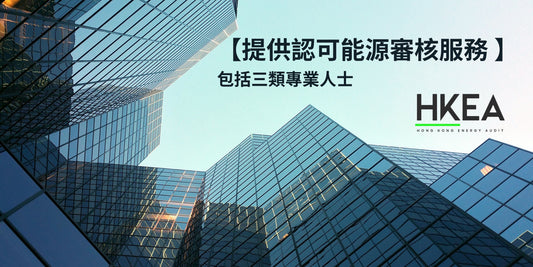LEED EBOM ((Existing Buildings – Operations & Maintenance))
LEED EBOM ((Existing Buildings – Operations & Maintenance))
Leadership in Energy and Environmental Design (LEED)* is a green building assessment standard developed by the US Green Building Council (USGBC) to promote sustainable building design and construction practices. Since its inception, the LEED standard has become one of the most widely recognized green building rating systems in the world.
The history of LEED can be traced back to 1993, when USGBC was established to promote the concept of sustainable construction. In 1998, the first version of LEED was officially launched. This version mainly focused on new commercial buildings. In the early stages of its introduction, the LEED standard attracted the attention of many construction professionals and quickly gained widespread support and application. Over time, the LEED standards have undergone multiple revisions and updates to adapt to changing environmental needs and advances in building technology. For example, LEED 2.0 was launched in 2005 and covers a more diverse range of building types, including homes, schools and medical facilities. LEED 3.0 was launched in 2009, adding more stringent assessment criteria and a new scoring system. The latest version, LEED v4.1, was released in 2019 and focuses on improving sustainability and quality of life.
The LEED standards were developed by the U.S. Green Building Council, so their roots are in the United States. However, as LEED's global influence expands, many countries and regions have begun to adopt LEED standards in their construction projects and adjust and apply them according to local needs. Today, LEED has been adopted in more than 170 countries around the world and has become an important standard in the international construction industry.
LEED's assessment method is based on a comprehensive score of a building's performance on multiple environmental and social indicators. LEED's assessments are divided into several main categories:
1. Sustainable Sites: Evaluate the selection and management of construction land, including the impact on the ecosystem.
2. Water Efficiency: Promote the use of water-saving facilities and effective management of water resources.
3. Energy and Atmosphere: Assess a building’s energy use and environmental impact, including the use of renewable energy.
4. Materials and Resources: Encourage the use of sustainable building materials and management of resources.
5. Indoor Environmental Quality: Ensure the health of the indoor environment, including air quality and lighting.
6. Innovation in Design: Encourage innovative and advanced architectural design and provide additional scoring opportunities.
Under each category there are specific scoring items against which a building can earn a certain number of points. Ultimately, based on the overall score, buildings can receive different certification levels, including Benchmark, Silver, Gold and Platinum. We at HK Energy Audit can assist you in applying for LEED certification for your target building or decoration design. Our LEED Accredited Professional will follow up to evaluate and ensure that the applicant can successfully obtain the target level of LEED certification.
As an important green building evaluation standard, LEED not only improves the sustainability and environmental performance of buildings, but also promotes people's attention to the health and well-being of the built environment. As global requirements for sustainable development continue to increase, LEED's influence will continue to expand and become an important reference standard for future architectural design and construction.

If you have any questions, please feel free to whatsapp us
Blog article
View all-

【甚麼是註冊專業工程師?與特許工程師有甚麼分別?】
註冊專業工程師(Registered Professional Engineer, R.P.E) 身份資格由香港工程師註冊局根據《工程師註冊條例》頒發,代表該工程師透過嚴格審核,並具備專業知識、經驗,並獲得香港政府認可,可以執行與安全、技術有關的工程項目及簽署相關文件;特許工程師(Chartered Engineer) 身份資格由工程學會頌發,同時亦可晉身該工程學會會員,或透過互認獲取更多不同學會的會員身份,特許工程師同樣是一種專業認可,包括該工程師在工程技術、管理能力同職業操守方面等,而且可以擔任高級技術或管理職位,特許工程師的國際認可性高,兩者有甚麼分別?
【甚麼是註冊專業工程師?與特許工程師有甚麼分別?】
註冊專業工程師(Registered Professional Engineer, R.P.E) 身份資格由香港工程師註冊局根據《工程師註冊條例》頒發,代表該工程師透過嚴格審核,並具備專業知識、經驗,並獲得香港政府認可,可以執行與安全、技術有關的工程項目及簽署相關文件;特許工程師(Chartered Engineer) 身份資格由工程學會頌發,同時亦可晉身該工程學會會員,或透過互認獲取更多不同學會的會員身份,特許工程師同樣是一種專業認可,包括該工程師在工程技術、管理能力同職業操守方面等,而且可以擔任高級技術或管理職位,特許工程師的國際認可性高,兩者有甚麼分別?
-

Three types of professionals provide accredited...
The "Buildings Energy Efficiency (Amendment) Bill 2025" passed its third reading in the Legislative Council in 2025. The revised Buildings Energy Efficiency Ordinance has several key features, including the inclusion...
Three types of professionals provide accredited...
The "Buildings Energy Efficiency (Amendment) Bill 2025" passed its third reading in the Legislative Council in 2025. The revised Buildings Energy Efficiency Ordinance has several key features, including the inclusion...
-

[Chartered Engineer One-on-One Course]
Most high-tech and management-level engineering positions in Hong Kong, or those requiring independent design, project leadership, and innovative solutions, typically require applicants to hold a Chartered Engineer (CE) qualification. HKEA...
[Chartered Engineer One-on-One Course]
Most high-tech and management-level engineering positions in Hong Kong, or those requiring independent design, project leadership, and innovative solutions, typically require applicants to hold a Chartered Engineer (CE) qualification. HKEA...




